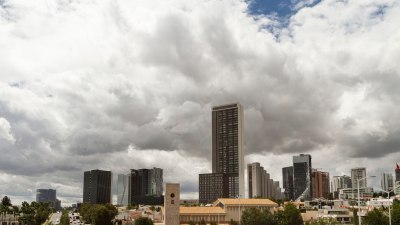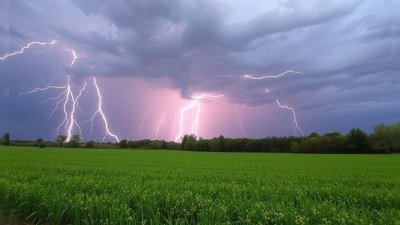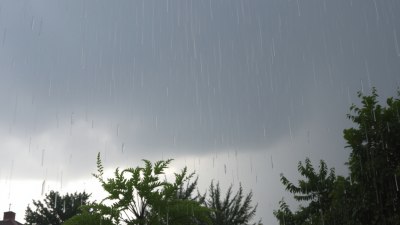Why Weather Fronts Sometimes Stall Over Cities and Won’t Leave
Explore the reasons why weather fronts stall over cities, affecting local weather patterns and causing extended precipitation.

Weather fronts are boundaries between two air masses with different temperatures and humidity levels. When these fronts stall, they can cause prolonged periods of rain, cloudy conditions, and other weather phenomena. This article delves into the reasons behind weather fronts stalling over cities and what implications these stalling fronts have on local weather patterns.
Understanding Weather Fronts
To appreciate why weather fronts stall, we first need to understand the types of fronts and their behavior. There are four main types of weather fronts: cold fronts, warm fronts, stationary fronts, and occluded fronts. Cold fronts occur when a cold air mass pushes into a warm air mass; warm fronts represent the advance of warm air over cold air; stationary fronts are where neither air mass is pushing forward; and occluded fronts happen when a cold front overtakes a warm front.
Why Do Fronts Stall?
Stalling fronts can occur due to several atmospheric dynamics. A common cause is high-pressure systems. When a high-pressure area is situated near a city, it can block the movement of a nearby front. This can lead to anomalous weather conditions, where local temperatures do not change significantly over time because the front can't advance or retreat. This phenomenon can lead to extended rain or chilly temperatures, impacting daily life.
The Role of Topography
Topography plays a significant role in how weather fronts behave over urban areas. Cities located near mountains or hills can experience stalling fronts due to the terrain disrupting normal air mass flow. Mountains can trap weather systems, preventing them from moving and leading to prolonged weather effects in cities that are situated in valleys or on the windward side of mountains. This can increase rainfall duration and intensity, as the air is lifted over the mountains, cools, and condenses, often leading to persistent precipitation.
Urban Heat Island Effect
Urbanization contributes significantly to local weather patterns. The Urban Heat Island (UHI) effect occurs when cities, due to their concrete and asphalt structures, become warmer than surrounding rural areas. This temperature difference can affect local airflow, enhancing convection and potentially attracting or repelling weather systems. When a weather front encounters this localized heating, it can disrupt its normal progression, leading to stagnation over the city.
Seasonal Influences
The seasonality of weather patterns can also affect how fronts behave. During certain times of the year, like winter or late fall, the contrast between warm and cold air masses can become more pronounced. This can cause stationary fronts to linger, particularly over urban areas where other factors, such as UHI and topography, also contribute to stalling fronts. In contrast, during summer, the added humidity from warmer ocean waters can also lead to stalling, creating heavy rain or thunderstorms.
Storm Systems and Frontal Interactions
Frontal interactions can lead to complex storm systems. When a low-pressure system moves near a city, it can create a stationary front if it slows down due to the surrounding high-pressure system. This can lead to heavy rainfall and potential flooding as the same mass of air remains over the area for an extended period, creating the conditions for persistent precipitation. This interaction is especially prevalent in coastal cities where warm, moist ocean air can be met with cooler, drier inland air.
Case Studies: Cities Affected by Stalling Fronts
Looking at various case studies, cities such as Seattle, Portland, and New Orleans frequently experience weather fronts that stall. For example, Seattle's proximity to the Pacific Ocean and the presence of the Cascade Range contributes to numerous weather fronts that can linger due to the interaction between oceanic and terrestrial air masses. The orographic lift from the mountains traps moisture, creating extended rainy periods.
In New Orleans, the flat terrain combined with the Gulf of Mexico's warm waters can lead to stalling fronts, especially during hurricane season when low-pressure systems are frequent. In both cases, the interactivity with local geography and climate creates specific conditions that contribute to prolonged periods of wet weather.
Implications of Stalling Fronts
The implications for urban areas facing stalling fronts are significant. Extended periods without weather transitions can lead to not only inconvenience but also serious infrastructural issues. Prolonged rain can lead to flooding, affecting roads, buildings, and critical infrastructure. Additionally, the stagnant air associated with stalling fronts can lead to air quality issues, as pollutants do not disperse effectively in such conditions.
Managing the Effects of Stalling Fronts
Cities can implement strategies to manage these impacts through improved drainage systems, urban planning that considers weather patterns, and the establishment of green spaces that can help mitigate some urban heat effects. Awareness and preparedness for weather events associated with stalled fronts can also involve public education on local meteorological phenomena.
The Future of Weather Forecasting
Advancements in meteorological technology have greatly enhanced our ability to predict the behavior of weather fronts. Improved satellite imagery, radar systems, and atmospheric modeling allow forecasters to better understand and predict the stalling of fronts. However, challenges remain due to the complexities of weather systems and local geography. Therefore, continuing research into the behavior of stalling fronts and their effects on cities is essential for enhancing forecasting capabilities.
Understanding why weather fronts stall over cities is crucial for urban planning and disaster preparedness. Factors such as topography, urban heat effects, and seasonal influences all contribute to this phenomenon. By investing in research and infrastructure, cities can better manage the challenges posed by stalling fronts, mitigating risks associated with prolonged adverse weather conditions.











